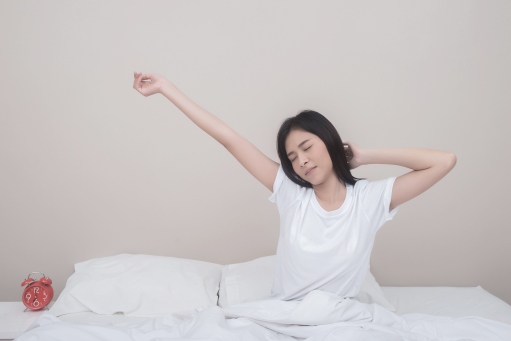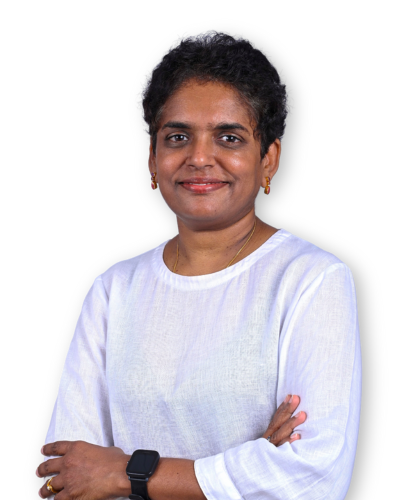Could a Smartwatch Be Your Wake-Up Call for Sleep Apnoea? Expert Explains.
<

Many struggle with poor sleep, often without realising that underlying conditions like sleep apnoea may be the cause. Most sufferers remain undiagnosed, with up to 80% of cases unnoticed. Timely detection is vital, as moderate-to-severe sleep apnoea significantly raises the risk of long-term health issues like high blood pressure, heart disease, and stroke.
“Sleep apnoea is a disorder where breathing repeatedly stops and starts during sleep. These pauses, sometimes lasting 10 seconds or more, can happen dozens or even hundreds of times a night, reducing oxygen flow and disrupting rest,” shared Dr Revadi Govindaraju, Consultant Ear, Nose and Throat (ENT) Surgeon at Subang Jaya Medical Centre (SJMC). “It is more common than many people realise, with estimates suggesting that about 30% of Malaysian adults are affected—and many of them may be unaware of their condition.”
Common signs include loud snoring, waking with gasping or choking sensations, daytime fatigue, morning headaches, difficulty concentrating, or mood changes or irritability. However, many people with sleep apnoea are unaware of the condition, as symptoms often occur during sleep and can be subtle or misattributed to other causes.
Diagnosing Sleep Apnoea
Since sleep behaviours are difficult to observe, some smartwatches and other wearable devices have recently introduced sleep monitoring functions. Consumers are increasingly using these devices to detect signs of sleep apnoea by monitoring patterns in breathing, heart rate, and oxygen levels during sleep, providing early alerts that can prompt medical evaluation. Earlier this year, the Ministry of Health (MOH) Malaysia, through the Medical Device Authority (MDA), approved the Sleep Apnoea Notification Feature (SANF) of a leading smartwatch brand as an over-the-counter mobile medical application.
But can these functions really be relied on to track sleep disorders like sleep apnoea?
“While accessible to anyone with a compatible device and useful in raising awareness about sleep health, smartwatches are not a replacement for professional medical advice. If you receive an alert, it is important to follow up with a healthcare provider for a proper diagnosis,” Dr Revadi stresses.
Sleep apnoea can be categorised into several types: Obstructive Sleep Apnoea (OSA), where throat muscles relax and block the flow of air into the lungs; Central Sleep Apnoea (CSA), when the brain doesn't send proper signals to the muscles that control breathing; and Treatment-Emergent Central Sleep Apnoea, where someone initially diagnosed with OSA develops CSA during treatment for OSA.
Proper diagnosis is essential to identify the type and guide effective treatment. A sleep study, also known as polysomnography, is the most common method for diagnosing sleep apnoea. It provides a comprehensive assessment of sleep patterns and physiological responses during rest. This test is conducted in a dedicated sleep lab where patients stay overnight. A range of vital indicators are monitored, including brain activity, breathing patterns, oxygen saturation levels, heart rate, and body movements, to detect abnormal pauses in breathing and determine the severity of the condition.
A home sleep test is also available, which involves wearing a portable device that monitors basic functions like airflow, oxygen levels, and breathing effort. However, home tests may not capture the full range of sleep-related issues or differentiate between types of apnoea. As such, an in-hospital sleep study remains the gold standard, especially for individuals with complex symptoms or other medical conditions.

Dr Revadi Govindaraju, Consultant Ear, Nose and Throat (ENT) Surgeon at Subang Jaya Medical Centre (SJMC).
Treating Sleep Apnoea
“Sleep apnoea is a highly treatable condition, and early intervention can significantly reduce the risk of long-term complications. Treatment plans are tailored to each individual based on the type and severity of their sleep apnoea, as well as any underlying health issues,” says Dr Revadi.
In many cases, lifestyle modifications are the first line of defence—losing excess weight, quitting smoking, managing allergies, and avoiding alcohol can help reduce airway obstruction during sleep.
For moderate to severe cases, the most effective treatment is the use of a Continuous Positive Airway Pressure (CPAP) machine. This device delivers a steady stream of air through a mask worn during sleep, keeping the airway open and preventing pauses in breathing. While it may take some time to adjust to, CPAP therapy has been proven to greatly improve sleep quality, energy levels, and overall health.
Alternatively, oral appliances—similar to a mouthguard—can be prescribed for patients with mild to moderate sleep apnoea. These devices reposition the jaw or tongue to help keep the airway clear. In certain cases where structural issues like enlarged tonsils, a deviated nasal septum, or jaw abnormalities contribute to the condition, surgical intervention may be considered.
“In a tertiary hospital setting like SJMC, ENT specialists collaborate with a multidisciplinary team across specialities including respiratory physicians and sleep technologists to ensure accurate diagnosis and personalised treatment, giving patients the best chance for long-term recovery and better quality of life,” shares Dr Revadi.
Sleep apnoea is a common yet underdiagnosed condition with serious long-term health risks. While clinical sleep studies remain essential for diagnosis, wearable devices are early alert tools for individuals who may not realise they are at risk. Combining smart technology with medical diagnostics allow individuals to have more tools to detect sleep apnoea early, supporting better sleep quality and improved overall health.
Source:
